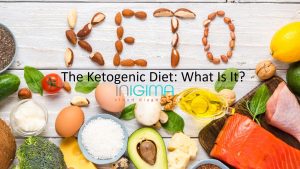The Ketogenic Diet: What Is It?
The goal of the ketogenic diet is to promote weight loss by putting your body into a state of fat-burning ketosis. It is a high-fat, very-low-carbohydrate eating regimen. Although it has gained popularity in recent years as a weight loss method, it was initially created 100 years ago as a way to lessen seizures in epileptics.

In addition to promising weight loss, the keto diet also asserts that it would decrease hunger and assist to balance blood sugar. It can be challenging to adhere to the routine, though.
According to Melissa Majumdar, a bariatric coordinator at Emory University Hospital Midtown in Atlanta and a recognised specialist in obesity and weight management, “one of the downsides of the keto diet is that it has very rigorous guidelines.” “I don’t know anyone who could stick to this diet for a very long time,” the speaker said. For those with specific medical issues, it poses additional risks.
When following a ketogenic diet, the body is forced to utilise fat reserves for energy rather than the carbohydrates that are normally consumed. A diet usually only needs to have 50 grammes of carbohydrates or less per day to start ketosis.
(For instance, a medium banana has roughly 29 grammes of carbohydrates, compared to about 15 grammes in a slice of whole-wheat bread.) Overall, a keto diet has less than 10% of calories from carbs. Protein makes up around 10% of daily calories, or roughly 12 gramme per pound of body weight, and fat accounts for the remaining 70% to 80% of calories.
Keto Foods
The foods that are high in fat, low in carbohydrates, and moderate in protein are the greatest for the keto diet. Examples include:
The best foods for the keto diet are those high in fat, low in carbohydrates and moderate in protein, such as:
- Avocados
- Eggs
- Fats, including oils like olive, palm and coconut, as well as butter and lard
- Fish and shellfish
- Low-carb, non-starchy vegetables, such as leafy greens
- Meat and poultry
- Cheese
- Nuts
- Olives
- Seeds
- Berries in very limited amounts (¼ cup), because they contain carbohydrates, although fewer than other fruits
- Dark chocolate and cocoa powder
Keto Diet Advantages
In the keto diet plan, a deliberate attempt is made to reduce the amount of carbs that are simple sugars, white bread, soda, bakery goods, etc., which are easy to digest. Here are a few advantages of the keto diet:
- Regulates “Bad” Cholesterol: Heart disease risk is enhanced by high levels of LDL (Low Density Lipoprotein). Low-carb diets both lower blood levels of LDL, which directly correlates to an improvement in heart health.
- Increases the “Good” Cholesterol Levels: A low-carb diet causes an increase in HDL (High Density Lipoprotein) levels. Ironically enough, increasing HDL levels through a low-carb (high-fat) ketogenic diet is a great approach to prevent heart disease in the long run.
- Reduces triglyceride levels: Triglycerides are only fat molecules! It is common knowledge that people who have greater triglyceride levels have a higher chance of developing heart disease. A low-carb diet is a fantastic way to lower your triglyceride levels.
- Blood Pressure Control: A low-carb diet is the best option if you want to permanently lower your blood pressure.
- Insulin Management: A low-carb diet is also beneficial for managing insulin levels and preventing blood sugar rises and subsequent crashes. As a result, type 2 diabetes can be effectively treated naturally with the ketogenic diet.
- Reduce the Extra Water Weight: When we are dehydrated, specifically, we tend to carry about extra water weight. With this diet, you can lose these excess pounds in the form of water weight quickly if you’re hoping to lose weight quickly.
- Prevent the Metabolic Syndrome: The metabolic syndrome is a group of risk factors that dramatically increases your risk of developing diseases like diabetes, heart disease, and stroke. A low-carb diet is one of the most effective approaches to avoid cardiovascular disease and the related consequences since it can lower these risk factors that lead to metabolic syndrome.
- Regulates appetite: When you eat fats as part of a low-carb ketogenic diet, your body makes adaptations to primarily burn fat for energy (this process is called ketosis). Consuming foods high in fat reduces the urge to overeat or snack frequently.
- Improves mental health: According to several study reports, a low-carb ketogenic diet improves your mood. This promotes mental and emotional wellness, which eventually results in good physical health.
- Rapid Weight Loss: A ketogenic diet can help you lose weight quickly because: o A low-carb diet helps you get rid of extra water weight
- Reduces insulin levels, which causes the kidneys to begin excreting extra salt from the body. The terrible belly fat can also be lost, which is the most crucial thing.
Comments are closed